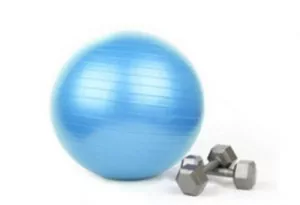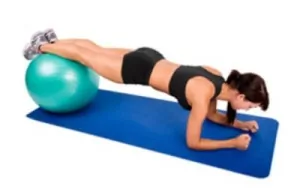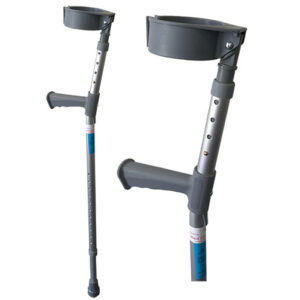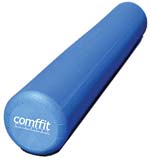Mechanical Pain
Updated:
What is mechanical pain?
Mechanical pain is a general term given to pain that can be relieved or provoked with certain activities or positions that place specific forces on damaged tissue.
Patients with mechanical pain typically experience symptoms during provocative activities (that are often reproducible) and little or no symptoms when these forces are removed.

Inflammatory vs. Mechanical Pain
The pain associated with a typical musculoskeletal injury can generally be categorised as being mechanical, inflammatory or mixed (with co-existing inflammatory and mechanical components).
Whilst mechanical pain tends to be positional, inflammatory pain can be present regardless of position.
Inflammatory pain occurs in association with an inflammatory response which usually lasts 48 – 72 hours following injury or injury aggravation. Part of the inflammatory response is the accumulation of swelling and chemicals that cause pain in and near the damaged tissue. Because the accumulation of these chemicals is not position dependent (and often occur in greater quantities with inactivity), this results in symptoms that are present regardless of position and often may increase with rest (such as at night or upon waking in the morning) especially following aggravating activity. Inflammatory symptoms are often described as constant, dull, aching or, in some cases, throbbing.
In patients with true mechanical pain, inflammatory symptoms such as constant pain, morning ache or pain with rest are typically absent (unless the damaged tissue is under constant mechanical stress).
Causes of mechanical pain
Mechanical pain is usually provoked when stress on the affected tissue is greater than it can withstand. This typically occurs due to repetitive, prolonged or traumatic stress on affected tissue, therefore causing injury or injury aggravation.
Injuries that occur suddenly are often due to traumatic forces such as a fall, collision, sudden take off, twisting incident, awkward landing, heavy lifting or motor vehicle accident. In injuries with insidious onset, repetitive or prolonged stresses (with inadequate recovery periods) are usually to blame. This may include activities such as excessive weight bearing activity (e.g. too much standing, walking or running), overuse of a specific body part, excessive sport, work, housework or recreational activity participation, excessive use of computers, mobile phones, or poor postural positions such as excessive sitting (e.g. at a computer, whilst driving, or when watching television).
Almost any injury has the capacity to produce mechanical pain. Some of the most common causes of mechanical pain include:
- Muscle injuries (such as tears or contusions)
- Tendon injuries (including tears or tendinopathy)
- Ligament tears
- Cartilage injuries (such as tears or degeneration)
- Nerve injuries (such as a pinched nerve)
- Joint Sprains
- Arthritis
- Intervertebral disc injuries
- Bone injuries (such as fractures, stress fractures or bony contusions)
Signs and symptoms of mechanical pain
Patients with mechanical pain typically experience pain only during specific activities or positions that place stress on damaged tissue. Pain can usually be relieved with rest or a change in position.
Pain is typically intermittent (i.e. it comes and goes) and may be experienced as sharp or dull. Tenderness is often experienced upon firmly touching the affected tissue. Swelling may be minimal or absent.
Other associated symptoms can vary considerably depending on the specific tissue affected and may include:
- A feeling of weakness
- Clicking, grinding, locking or catching sensations
- Giving way of a particular body part
- A limp (for lower limb injuries)
- Restricted joint mobility or flexibility
- Pins and needles or numbness
Diagnosis of a mechanical pain
A thorough examination from a physiotherapist is usually sufficient to diagnose the presence of mechanical pain and the underlying cause. Investigations such as X-ray, ultrasound, CT scan and MRI are sometimes used to confirm diagnosis and exclude the presence of other injuries.
General treatment principles for mechanical pain

Members Only ContentBecome a PhysioAdvisor Member to gain full access to this exclusive content. For more details see Become a Member. Already a member? Login Now
Surgery for mechanical pain
A small percentage of patients who experience mechanical pain (due to specific conditions) may require surgery to ensure an optimal outcome (especially if their condition has not responded to an appropriate physiotherapy program). Some common causes of mechanical pain requiring surgical intervention include:
- Certain fractures (requiring realignment, internal fixation or bone grafting)
- Severe osteoarthritis (requiring joint replacement surgery)
- Severe cartilage injuries (requiring arthroscopic debridement)
- Full thickness muscle, tendon or ligament tears (requiring surgical repair)
- Joint dislocation (requiring stabilisation surgery)
- Severe spinal conditions often with associated arm or leg pain (requiring procedures such as discectomy, laminectomy or spinal fusion)
Prognosis for mechanical pain
The prognosis of mechanical pain is largely dictated by the nature and severity of the injury. Minor cases may resolve within days to weeks, more severe cases (particularly those involving surgery) may take many months or sometimes years and may require other intervention to ensure an optimal outcome.
Contributing factors to the development of mechanical pain
There are several factors which may predispose patients to developing mechanical pain. These factors can vary depending on the tissue affected and can usually be identified and corrected with direction from a physiotherapist. Some of them may include:
- inappropriate or excessive training or activity
- inadequate recovery periods from training or activity
- work, housework or recreational activities involving repetitive, prolonged or heavy forces
- inadequate rehabilitation following a previous injury
- poor posture or biomechanics
- poor sporting technique
- muscle weakness
- muscle tightness
- joint stiffness
- inadequate warm up
- inadequate fitness
- fatigue
- poor pelvic and core stability
- poor control or balance
Physiotherapy for mechanical pain
Physiotherapy treatment is vital to hasten the healing process and ensure an optimal outcome in patients with mechanical pain regardless of whether they require other intervention. Treatment will vary based on the condition causing the mechanical pain and stage of healing. Physiotherapy treatment may comprise:
- soft tissue massage
- joint mobilization
- joint manipulation
- electrotherapy
- taping or bracing
- the use of other supportive devices such as crutches, walking sticks, protective boots etc.
- dry needling
- hydrotherapy
- ice or heat treatment
- progressive exercises to improve flexibility, balance, strength, control, cardiovascular fitness and function
- activity modification advice
- biomechanical and postural correction
- education
- weight loss advice where appropriate
- a gradual return to sport or activity program
Other intervention for mechanical pain
Despite appropriate physiotherapy management, some patients with mechanical pain fail to improve adequately either conservatively or following surgery. When this occurs the treating physiotherapist or doctor can advise on the best course of management. This may include further investigations, pharmaceutical intervention, injection therapy (e.g. cortisone, pain relieving or blood injection), minimally invasive procedures or surgery.
Exercises for mechanical pain
Patients with mechanical pain frequently benefit from progressive, pain free exercises to improve flexibility, strength, function and control of the injured area depending on the specific injury and stage of healing. You should discuss the suitability of any exercises with your physiotherapist prior to beginning them. Below is a list of flexibility and strengthening exercises commonly used in rehabilitation for various injuries:
Joint Stretches
- Ankle Stretches
- Elbow Stretches
- Hand Stretches
- Hip Stretches
- Knee Stretches
- Lower Back Stretches
- Neck Stretches
- Shoulder Stretches
- Upper Back Stretches
- Wrist Stretches
Joint Strengthening Exercises
- Ankle Strengthening
- Elbow Strengthening
- Hand Strengthening
- Hip Strengthening
- Knee Strengthening
- Lower Back Strengthening
- Neck Strengthening
- Shoulder Strengthening
- Upper Back Strengthening
- Wrist Strengthening
Other Common Rehabilitation Exercises
 Physiotherapy products for mechanical pain
Physiotherapy products for mechanical pain
Some of the most commonly recommended products by physiotherapists to hasten healing and speed recovery in patients with mechanical pain include:
To purchase physiotherapy products for mechanical pain click on one of the above links or visit the PhysioAdvisor Shop.
 Find a Physio to assist with mechanical pain
Find a Physio to assist with mechanical pain
Find a physiotherapist in your local area who can treat the underlying cause of mechanical pain.
 More Information
More Information
- Inflammatory Pain
- Posture
- Mobile Phone Ergonomics
- Ergonomic Computer Setup
- Safe Lifting
- Choosing a School Bag
- Ice or Heat
- Choosing a Shoe
- Do I Need Orthotics
- Injury Prevention
- Sports Recovery
- Warm Up & Cool Down
- How to Use Crutches
- Investigations
- Returning to Running
- Return to Sport
- Bike Setup
- Injuries
- Understanding Pain
 Physiotherapy Exercises
Physiotherapy Exercises
- View our large range of Physiotherapy Exercises
Become a PhysioAdvisor Member

Link to this Page
If you would like to link to this article on your website, simply copy the code below and add it to your page:
<a href="https://physioadvisor.com.au/health/injury-rehabilitation/mechanical-pain-physioadvisor”>Mechanical Pain – PhysioAdvisor.com</a><br/>Detailed physiotherapy information on Mechanical Pain including key treatment principles written by PhysioAdvisor's experienced physiotherapists.
Return to the top of Mechanical Pain.







